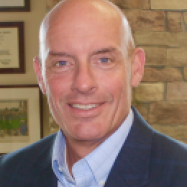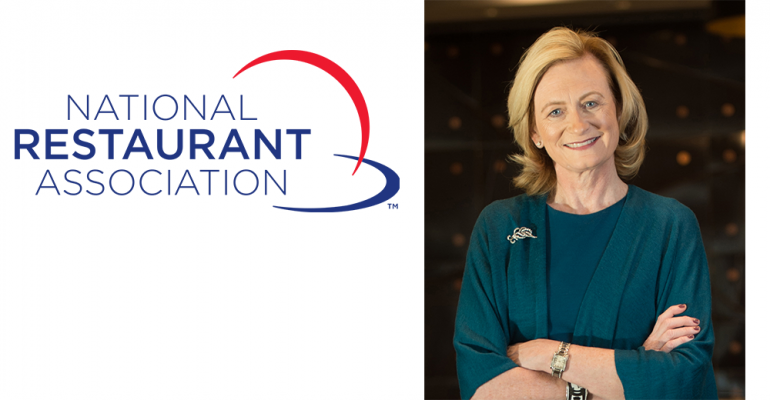 Joe Kefauver is managing partner of Align Public Strategies, a full-service public affairs and creative firm that helps corporate brands, governments and nonprofits navigate the outside world and inform their internal decision-making. This article does not necessarily reflect the opinions of the editors or management.
Joe Kefauver is managing partner of Align Public Strategies, a full-service public affairs and creative firm that helps corporate brands, governments and nonprofits navigate the outside world and inform their internal decision-making. This article does not necessarily reflect the opinions of the editors or management.
Many of us were surprised recently to learn that Dawn Sweeney, the Chief Executive Officer of the National Restaurant Association, announced her intention to retire at the end of this year. While industry-leading jobs like Dawn’s are never easy, she seemed to be at the top of her game and deftly navigated the industry through the proverbial icebergs, whether they be internal or external. Perhaps that’s the best time to “drop the mic” — when things are going well and, ironically, the organization is probably best prepared to weather change.
So what will Dawn’s legacy be? Opinions will obviously vary. But for me, Dawn’s legacy will be about the financial sophistication she brought to the organization. She inherited an association that was almost completely financially dependent on an annual trade show (with a little bit of dues money sprinkled in) and transformed it into a financial powerhouse.
“For our industry, any strategy that doesn’t start and end with fully utilizing our biggest and only real political advantage — our footprint — is a doomed strategy.”
Through new agreements, new dues structures, a more sophisticated Board of Directors, bigger and better product offerings, and the selling of the trade show just to name a few of her accomplishments, the NRA now has money. Lots of money. It is now a well-funded and well-resourced organization and we’ve never really been able to say that before. You can thank her for that. While she obviously made countless other significant contributions, it will be getting the financial house in order that will set her apart from her predecessors.
So what now? For starters, it’s likely some very talented people will find that job quite attractive — in large part due to the healthy financial situation. The question is whether the Association leadership will get the right person that has a clear vision of what needs to be done and how and where to put those financial resources to work to realize that vision.
As a public policy person, I am obviously biased toward that part of the world and there is much to be done in that space. And the confluence of the timing of significant positive changes in the association’s internal financial situation overlapped with equally significant negative changes in the external political environment make this an opportunistic time to make some serious pivots.
First of all, we need to quit solely tilting at windmills in Congress and many of the big state legislatures. I’m not saying we walk away from the lobbying and political game — of course not — but it can’t be our only (and leading) approach to advocacy. It has to be a part of a broader strategy. But right now it’s our only strategy.
That would potentially make more sense if we put about 25 times the political money into the system, at say the level of the banking or pharmaceutical industry. But we don’t and never will. We send our lobbyists into Congress or state legislatures with political pea shooters and wonder why we don’t win more. In fact, it tells you how really good many of our key players are that they succeed as much as they do with limited financial resources at their disposal.
As each day passes, with the influx of increasingly larger amounts of money from ideological political players with names like Koch and Soros, that approach becomes even more precarious.
For our industry, any strategy that doesn’t start and end with fully utilizing our biggest and only real political advantage — our footprint — is a doomed strategy. Again, this is not about current association leadership or staffing — the industry is well served in that regard.
It’s about a significant industry-wide pivot on how we see ourselves and where our best potential to move the public policy needle resides. In my humble opinion, successful issue management starts with a significant presence — the proverbial footprint — everywhere that matters. And who is better positioned for that than the restaurant industry?
For better or worse, we are an archipelago of tens of thousands of little islands spread across every corner of the country — literally the Indonesia of the American economy. But, it bears repeating — in every corner. And our core issue and reputational challenges emanate from those corners, mainly at the urban level in cities across the country.
The national conversation about our current industry business model with regard to wages and benefits, the quality of our jobs, and our relevance to the economy is happening at the local level.
The national conversation around our future business model — last mile delivery, automation, and future of work issues like portable benefits — is happening at the local level. And innovations to the restaurant models of the future are happening — you guessed it — locally. To properly manage those issues and that national conversation, we have to be seriously engaged where they are happening. Locally. And we are not.
By contrast, the progressive community quite clearly gets the joke on this. They start percolating a conversation at the grassroots level, grow acceptance of it by opinion leaders, elected officials, academia and other community stakeholders, and turn it into a legislative and political agenda. They leverage “grassroots” to begin the process and continue the drumbeat throughout. Our industry goes precisely the other way.
Our committees and boards set a legislative and political agenda for ourselves and then try to get some meaningful level of political and public acceptance for it at the end of the process. Very different.
And in the modern communications world of instant social media and awareness - and engagement — by almost every citizen and voter — it’s quite clear they are approaching it and building consensus in a much smarter — and obviously much more effective — manner. The national polling numbers on the industry issue set overwhelmingly bear that notion out.
They are playing a modern game while we do it the same way we did in 1985. Even the British eventually figured out they needed to dispense with their bright Redcoats and quit lining up in the open; I think we probably should too.
The best way to honor Dawn Sweeney’s legacy is to smartly and strategically put the substantial resources she built towards taking us to the next level. If we are going to compete at any meaningful level in the political and policy process going forward, we have to completely transform ourselves into a grassroots machine that more closely resembles an interest group than a trade association.
We have to reform and reformulate how we manage issues and how we begin our own conversation in our own communities to define ourselves.
That process takes vision, money and time. As for vision, the board of the NRA needs to hire someone with a clear idea of the challenges and opportunities ahead. As for time, the time is now and change at the top brings the opportunity to pivot. And as for money, thanks to Dawn, for the first time the organization has the resources to do what needs to be done. Spend it.
But to be a transformative figure like Dawn, her successor will also have to take on conventional wisdom, old-think, sacred cows, and risk the temporary disgruntlement of valuable industry partners.
But she proved that the price paid for doing that is nothing when compared to the price paid for not doing it.

